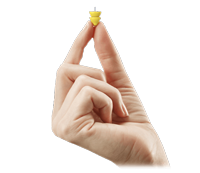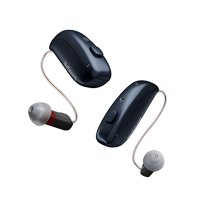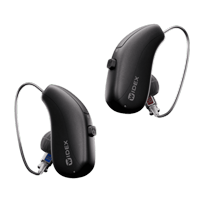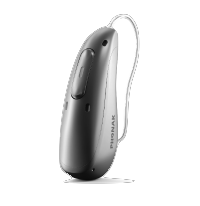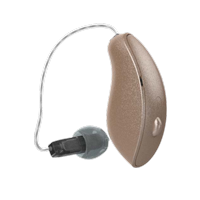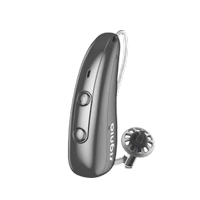When you were diagnosed with hearing loss, was one ear affected more than the other? This can often be the case, and because hearing aids can be expensive, it can be tempting to use just one hearing aid instead of two. But is that a good idea?
The Ears Work Together
Because they are all we can see, we may think that our hearing is done mainly by our two ears, but that isn’t true. Our brains are even more important to hearing and understanding the world around us, and our brains are connected to our ears through auditory nerves. Our brains are the heavyweights, translating noises we hear into sound that means something. Who knew our hearing was so complex? Or that a problem with any one component in the auditory system can cause hearing as a whole to break down.
Even if they are not equally damaged, hearing loss in one ear is quite often accompanied by damage in the other ear as well. Wearing a hearing device on only one side can backfire, because it will support one ear and not the other. The ear that is being helped will probably not decline any further, but the unassisted one might.
Hearing Exercises
Our bodies need regular exercise—without it, our muscles will atrophy and wither away. Regular exercise is important—and this is also true for our brains and our ears. With the progression of hearing loss, sounds can sometimes be heard but not understood. This can be very frustrating and may be the result of a “bad connection” along the auditory nerve between the ears and the brain. Doing “hearing exercises” can slow this progression and help your brain to “re-learn” how to interpret sounds meaningfully.
Your audiologist can give you exercises and other options that could help.
Hearing Well
One way to support good listening comprehension is to make sure your ears are hearing equally. Auditory stimulation is increased, and your brain can work less to understand the noises your ears bring in. Therefore, for any hearing damage and you want the most seamless, effortless listening experience possible, you should wear two hearing aids instead of just one.
Wearing two hearing aids can also save on battery life over wearing just one, on top of being more effective overall. It may also give you the opportunity to wear more discreet (smaller) hearing devices because of the lower power requirements of each hearing aid.
Triangulation
Our ears are fine-tuned to help us not only hear and understand the world around us, but to determine from which direction sound is coming. This can come in handy when we are in danger: we don’t want to run towards something that will hurt us, so we need to know where it is coming from! When both ears hear equally, you can better pinpoint the source of the noise around you. This ability, called “localization” is practical in everyday life, and also necessary for protection. Lopsided hearing makes localization much more difficult.
Wearing hearing aids instead of one are generally happier and more content with their hearing experience, because two hearing aids can reestablish hearing much more efficiently than one. Hearing, listening and understanding depend on more than just our ears, so the more help they have the better.
Here at California Hearing Center we are committed to your hearing health. Call us today to set up an appointment for a hearing screening.


